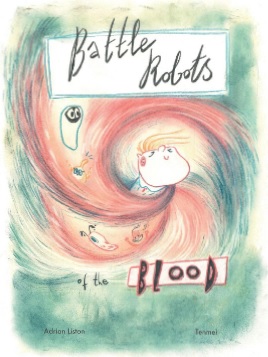The verdict on Andrew Wakefield: Fraud
 Thursday, January 6, 2011 at 10:24PM
Thursday, January 6, 2011 at 10:24PM In 1998 Andrew Wakefield published a paper which has severely damaged public health in the last ten years. Based on his observations of only twelve children, nine that he claimed had autism, and without a control group, he concluded that the measles/mumps/rubella vaccine caused autism. As a hypothesis, this was fine, unlikely, but not impossible. He saw nine children with autism, reported that their parents linked this onset with the MMR vaccine, and put it in the literature. Why on earth on underpowered observation like this made it into the Lancet is beyond me, but there is nothing wrong with even outlandish hypotheses being published in the scientific literature. Was it a real observation, or just an effect of a small sample size? Was it a causative link, or just due to coincidence in timing?
As with any controversial hypothesis, after this one was published a large number of good scientists went out and tested it. It was tested over and over and over again, and the results are conclusive - there is no link between the MMR vaccine and autism.
In itself, this was of no shame to Andrew Wakefield. Every creative scientist comes up with multiple hypotheses that end up being wrong. People publish hypotheses all the time, then disprove them themselves or have them disproven by others. If you can't admit being wrong, you can't do science, and it is in fact the mark of a good scientist to be able to generate hypotheses that others seek to knock down. Ten of the thirteen authors on the study were able to see the new data and renounce the hypothesis.
The shame to Andrew Wakefield is not that his hypothesis was wrong. No, the shame he has brought upon himself was by being unscientific, unscrupulous and unethical:
- Firstly, Wakefield did not present his paper as a hypothesis generator, to be tested by independent scientists. Instead he went straight to the media and made the outrageous claim that his paper was evidence that the MMR vaccine should be stopped. This is not the way science or medicine works and was a conclusion unsupported by the data. Worst of all it was a conclusion that many parents without scientific training were tricked into believing. Vaccination rates for MMR went down (autism rates have remained unchanged) and children started dying again of easily preventable childhood diseases. A doctor does not see half a dozen children that developed leukemia after joining a football team and then hold a press conference telling parents that playing sports causes cancer in children, which is the direct equivalent of Wakefield's actions.
- Secondly, it has now been conclusively demonstrated that his original data was fraudulent. Interviews with the parents of the original nine children with autism show that he faked much of the data of the time of onset, taking cases where autism started before the MMR vaccine and reversing the dates to suggest that the vaccine started the autism. Analysis of the medical records of these children show that as well as the timing being incorrect, many of the symptoms were simply faked and non-existent. The evidence on this charge alone makes Wakefield guilty of professional misconduct and criminal fraud.
- Thirdly, unknown to the coauthors of the study and the parents of the children, Wakefield had a financial conflict of interest. Before the study had begun, Wakefield had been paid £435 643 to find a link between vaccines and disease as part of a lawsuit. Every scientist must disclose their financial interests in publication so that possible conflicts are known - Wakefield did not. If he had disclosed this to the press conferences the media may have been slightly more skeptical about his outlandish claims.
These last two issues, scientific misconduct and financial conflict of interest, are the reason why the paper was formally retracted by the Lancet. Studies that are wrong don't get retracted, they just get swamped by correct data and gradually forgotten. Instead, the retraction indicates that the Wakefield paper was fradulent and should never have been published in the first place. Likewise, the British General Medical Council investigated the matter and found that Wakefield "failed in his duties as a responsible consultant" and acted "dishonestly and irresponsibly", and thus struck him off the medical registry.
The worst part about this sorry affair is that it is still dampening down vaccination rates. Literally hundreds of studies, with a combined cohort size of a million children, have found no link between the MMR vaccine and autism, yet one fraudulent and retracted study of nine children is still talked about by parents. Some parents are withholding this lifesaving medical treatment from their children, and their good intentions do nothing to mitigate the fact that cases of measles and mumps are now more than 10 times more likely than they were in 1998, and confirmed deaths have resulted. And Andrew Wakefield, the discredited and disbarred doctor who started this all? Making big money in the US by selling fear to worried parents, and deadly disease to children who have no say in it at all.
 Medicine,
Medicine,  immunology,
immunology,  scientific method
scientific method 



